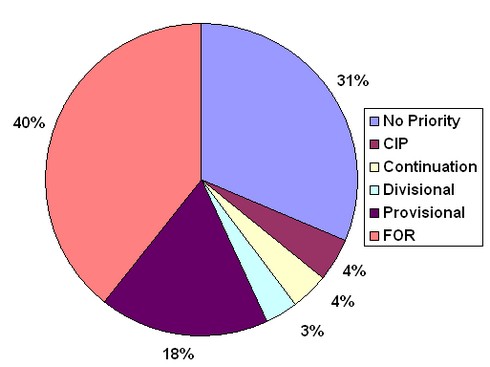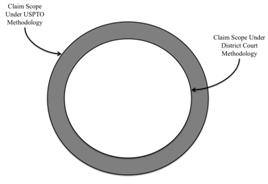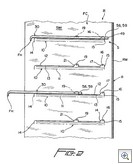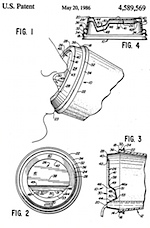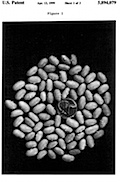Statement of David J. Kappos
Nominee for Under Secretary of Commerce for Intellectual Property
and Director of the United States Patent and Trademark Office
Nomination Hearing before the Senate Judiciary Committee
July 29,2009
Chairman Leahy, Ranking Member Sessions and distinguished members of the Senate Judiciary Committee, thank you for the opportunity to appear before you today. I am grateful to President Obama and to Secretary Locke for the trust they have placed in me and to you for considering my nomination to serve as Under Secretary of Commerce for Intellectual Property and Director of the United States Patent and Trademark Office.
… It is exceptional and humbling under any circumstance to have the chance to serve one's country. But it is particularly so for me as the son and grandson of immigrants – my father came to this country from Greece and my mother's parents came to the US from Italy. So, the opportunity to be here today is particularly poignant for me, as it is for my family.
If recommended by this Committee and confirmed by the Senate, I look forward to joining Secretary Locke and his team at Commerce in their mission as stewards of American economic growth, job creation and innovation.
I have spent nearly my entire professional career in the field of intellectual property law, and indeed my entire career around technology and innovation. After receiving my education from the University of California system, first in electrical and computer engineering and subsequently in law, I went to work for IBM as an intellectual property law attorney.
During my career at IBM, I have held intellectual property law positions in nearly all of its business units. I have written and prosecuted patent applications in many technical areas and I have searched the prior art files of the USPTO alongside other patent professionals, including examiners themselves. I have handled many trademark matters in the US and globally. I managed IBM's IP law interests across the Asia-Pacific region, and lived in Japan during that period. Currently and for the past six years, I have served as Vice President and Assistant General Counsel for intellectual property law at IBM's corporate headquarters. In that role, I am responsible for the management of intellectual property interests – patents, trademarks, trade secrets and copyrights – on a worldwide basis. Additionally, I have served in leadership positions in the major professional associations that represent the intellectual property law community in this country and globally, including the Intellectual Property Owners Association and the American Intellectual Property Law Association.
I care passionately about this field and the role intellectual property plays in advancing American innovation. So, it is particularly exciting for me to be considered for the position of Director of the USPTO, an organization that traces its roots to the founding fathers and their understanding that promoting and rewarding innovation is critical to our country's success.
The PTO faces many challenges. Most immediate are those resulting from the current economic downturn, the need for a stable and sustainable funding model, the need to address pendency concerns while preserving and enhancing patent quality, and the imperative to attract and retain skilled personnel at a time of fiscal constraint. Secretary Locke has personally asked me to make it my number one priority to refashion the patent examination process to meet these challenges. In carrying forward this direction, I will focus substantial personal attention within the USPTO. Additional challenges flow from a rapidly globalizing trade environment , impacting trademark and patent interests, as well as respect for intellectual property and the consequences where IP is not respected.
Longer term, the USPTO must keep abreast of the astounding pace of technological change across a broad range of scientific disciplines. It needs to understand new modes of innovation and their effect on its mission. And it will need to constantly rethink how to maintain and enhance the constitutional imperative to promote innovation and scientific advancement for the public good – both in terms of the technology confronting the Office and in terms of leveraging and applying the law to that technology.
I welcome this challenge and pledge to you all of my energy, creativity and intellect should I be confirmed. As I consider this challenge, I am mindful of several things.
I am mindful that the USPTO serves the interests of ALL innovators in this country, small and large, corporate and independent, academic and applied, and – most importantly — the public interest. While I have spent my career to date at a large corporate enterprise, I am familiar with the concerns and issues of all USPTO constituents – including small and independent inventors, the venture and start-up community, public interest groups, the patent bar and many others – and will reach out to all of them.
I am mindful of the incredible dedication of the thousands of USPTO employees, and the essential role they play to the success of the US innovation system. I will work every day with the USPTO employees and the unions that represent them to establish strong, positive relationships grounded in professional treatment for these workers producing work product based on professional judgment.
I am acutely mindful that innovation today is global and that IP policy is of paramount importance, not only in our country, but also in the EU and Japan, in China, India, Brazil and many other developing countries. I will use my international experience and my understanding of global IP trends to help this Administration represent, advance, and protect the interests of American innovators in the global arena and to lead the world in developing strong, balanced, inclusive intellectual property systems that advance the well-being of all participants.
Finally, I am mindful that the office for which I am being considered, working as part of Secretary Locke's team and within the Administration's agenda, must be intensely focused on how to serve the American people at this time of economic uncertainty. I believe the USPTO can play a significant role in enhancing economic growth, creating jobs and advancing American innovation. I hope to play a part in this important mission.
Again, I am grateful for the opportunity to address you today. I am honored by the opportunity to serve and I look forward to joining this Administration and Secretary Locke's team should I be confirmed.
I am pleased to answer any questions.
David J. Kappos
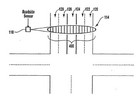 Wavetronix v. EIS Electronic Integrated Systems (
Wavetronix v. EIS Electronic Integrated Systems (
